|
|
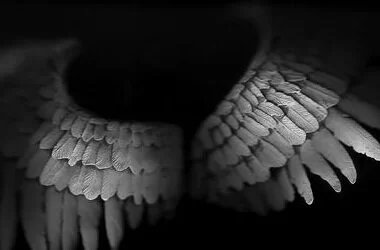 |
|
|
|
|
|
|
|
|
|
|
|
|
|
Angel wings, or the idea of angels having wings is believed by many throughout society, today.
However, the story behind angels and wings is complicated and confusing, finding its origins
within ancient literature and art. Also see: Angel Wings Pictures
Most ideas concerning angels with wings may be found within the Hebrew and Christian Bibles.
One can find angels having wings within the prophetic books of Isaiah, Ezekiel, and Revelation.
These angels are known as cherubim and seraphim, and are described from within visions. They
are not the same as the spirit messengers that visit mankind. Though their appearance is
described as having wings, they also look different from typical depictions of dual angel wings. For
example, cherubim have four wings, while seraphim are said to have six. They are not described
as being human in form, though they may share some attributes similar to mankind. We read that
cherubim have four faces, one like an ox, one like an eagle, one like a lion, and one like a man.
Some Jewish rabbis are quick to point out that what may be described as angels being described
within these prophetic visions, are likely philosophical representations of the laws of nature, or
principles in which the universe operates. In other words, these angels are not the same divine
spirit messengers that Biblical patriarchs witnessed, but are actually parables that need to be
spiritually interpreted. Angels, wings, halos, thrones, heaven, etc are all symbols of spirituality.
Though misunderstood, perhaps these passages found within ancient manuscripts helped to
influence cultural, and eventually artisan interpretation of angels.
Yet, there are better descriptions found within both the New and Old Testaments, and these angels
do not have wings. The word angel means messenger, a spirit or physical being that brings word
to another. For example in the Old testament, both Abraham and Lot were visited by spirit
messengers that were not distinguishable from human beings (Genesis 18-19). The people of
Sodom who also saw them described them as being "men." This idea is found within many other
texts, and is especially fortified in the New Testament book of Hebrews, chapter thirteen:
"Do not forget to entertain strangers, for by so doing some people have entertained angels
without knowing it."
If an angel had wings, one would be tipped off that such a stranger was strange indeed!
|
|
|
|
|
|
|
|
|
|
|
|
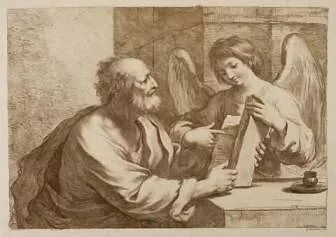 |
|
|
|
Angel Wings in Art
Wings on angels did not appear in early Christian
art, and this would seem to substantiate the idea
that early Christians did not view angels as spirit
beings with wings. In fact, angel wings were not
used to depict divine messengers' higher estate
(the heavens, perhaps?) until after the fourth
century. The same is true of halos, one should
know. Angels in early Christian art were first
rendered in human form, typically as men dressed
in robes. Perhaps in the first few centuries of
Christianity, wings were considered to be things
used in the depictions of pagan gods and spirits.
|
|
|
|
|
|
|
|
|
Above: Saint Matthew and an Angel by F. Bartolozzi & G. Guercino
|
|
|
|
|
|
|
|
|
Ancient Mesopotamian, as well as Egyptian gods were known to be illustrated as winged prior to
Christianity's eventual portrayal of angel wings. The ancient Greeks used wings to represent their
gods, such as Hermes and Perseus. Cupid of Roman mythology was also a winged deity that
pre-dated Christian interpretation of angels with wings. So it is of no surprise that eventually
winged, angelic beings began appearing in paintings and sculptures, as there was plenty of prior
winged-art from which future Christian and other religious artists could draw inspiration from. And
so, angels with wings began appearing in European artwork beginning with the Middle Ages,
eventually becoming very prominent during the Renaissance period. There is little doubt that the
influence of artists who portrayed angels with wings, as well as accounts of visions within ancient
literature both helped to form the societal beliefs concerning angels and wings.
|
|
|
|
|
|
|
 |
|
|
|
|
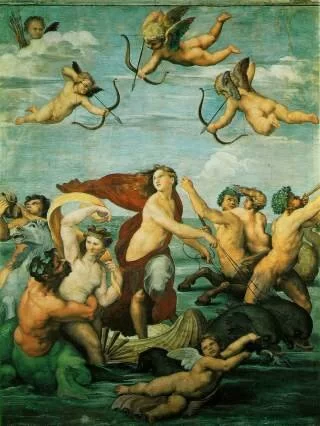 |
|
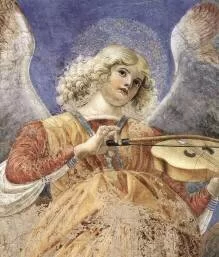 |
|
|
|
|
|
Far left:
"Galatea" by Italian
Renaissance artist Raphael.
Left:
"Angel Musician" by artist
Melozzo da Forli, ca. 1480.
Below:
"Crucifixion" by Giotto di
Bondone, ca. 1266-1337
|
|
|
|
|
|
|
|
|
|
|
|
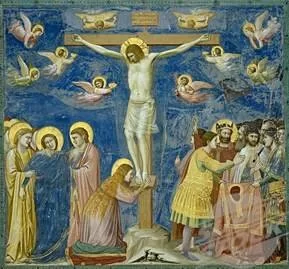 |
|
|
|
|
|
|
|
|
|
 |
|
|
|
|
|

|
|
|
|
Angel Wings design (top) courtesy of Garrette
Angel Wings content Copyright 2009 Angels & Ghosts, LLC
|
|
|
|
|